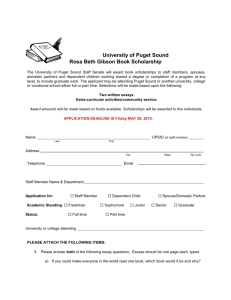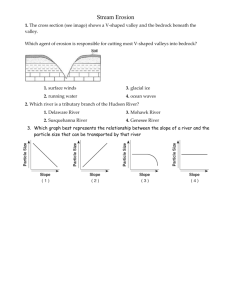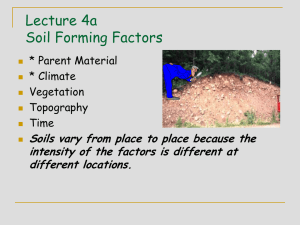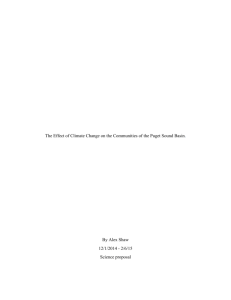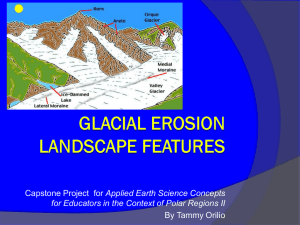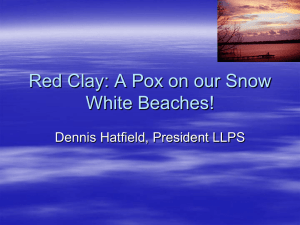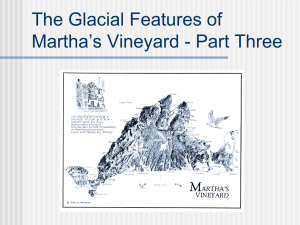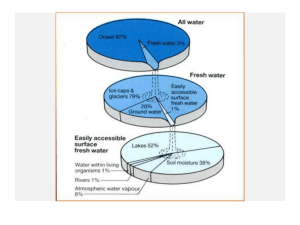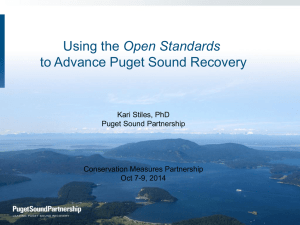Puget Sound Seafloor
advertisement
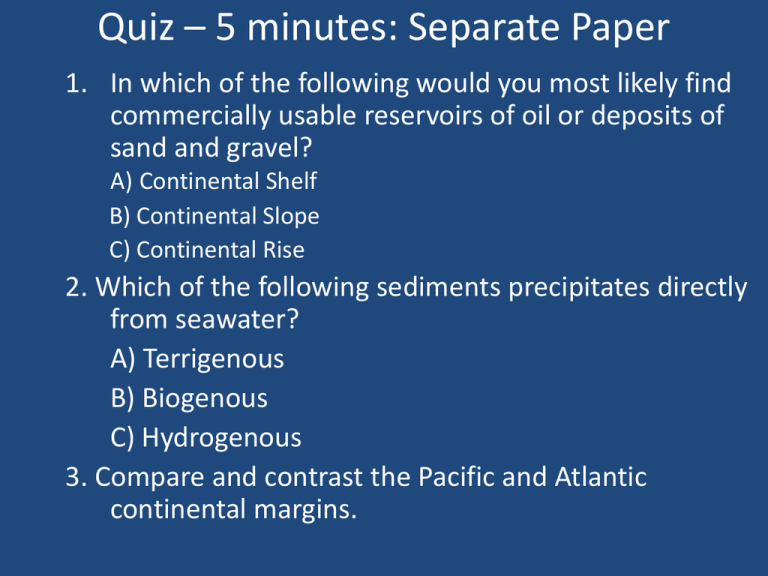
Quiz – 5 minutes: Separate Paper 1. In which of the following would you most likely find commercially usable reservoirs of oil or deposits of sand and gravel? A) Continental Shelf B) Continental Slope C) Continental Rise 2. Which of the following sediments precipitates directly from seawater? A) Terrigenous B) Biogenous C) Hydrogenous 3. Compare and contrast the Pacific and Atlantic continental margins. Puget Sound Seafloor Chapter 14 vs. Puget Sound • In general, the features described in Chapter 14 are not found in Puget Sound (no midocean ridges, cont’l shelf, slope, rise, seamount, guyot, trench, atoll…) • Instead, Puget Sound’s seafloor consists of sediments shaped by recent (<25,000 years before present) glacial action Glaciers Energy and Movement of Material Water can provide a “low to high energy” environment and is capable of moving clay, sand, gravel and boulders Air is generally “low energy” and is capable of moving clay and sand Glaciers… Glaciers can be “extreme energy” and move clay, sand, boulders, and housesized boulders Glacial “Erratic” How Erratics Can be “Plucked” and Transported Glacial Scouring • Video • http://exhibits.pacsci.org/puget_sound/graphi cs/ps_glaciationsm.mov So, What’s Beneath the Surface? Puget Sound “Scoured Out” by Glaciers Red = Shallow Blue = Deep Puget Sound “Scoured Out” by Glaciers Red = Shallow Blue = Deep Shallow Sills Deep basins North Profile View of Previous Slide South Deep basins Shallow Sills Video Again http://exhibits.pacsci.org/puget_sound/graphics /ps_glaciationsm.mov Interesting Aside (Not Oceanography) Glacial Deposits •Layered clay accumulates in the bottoms of large, proglacial (“in front of the glacier”) lakes •Layered sand and gravel accumulates in the bottoms of rivers draining the lake (called “outwash”) •“Glacial till” deposited directly by the glacier: very dense, non-layered mixture of clay to house-sized boulders Glacial Deposits “Lacustrine” (lake) clay Clay Glacial Deposits “Outwash” sand and gravel Outwash Glacial Till Interesting Aside (not oceanography) Summary of Puget Sound Glaciation 1.“Old,” pre-glacial sediments (hard sands, clays etc.) on bottom 2.Pro-glacial lake deposited clay next 3.Advancing glacier deposited “outwash” (sand and gravel) next 4.Glacier deposited till next 5.Glacier receded, scouring the landscape and depositing the opposite sequence 6.Left behind Puget Sound, which filled with ocean water Landslide Situations
